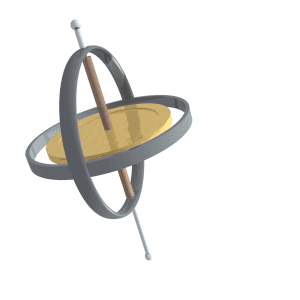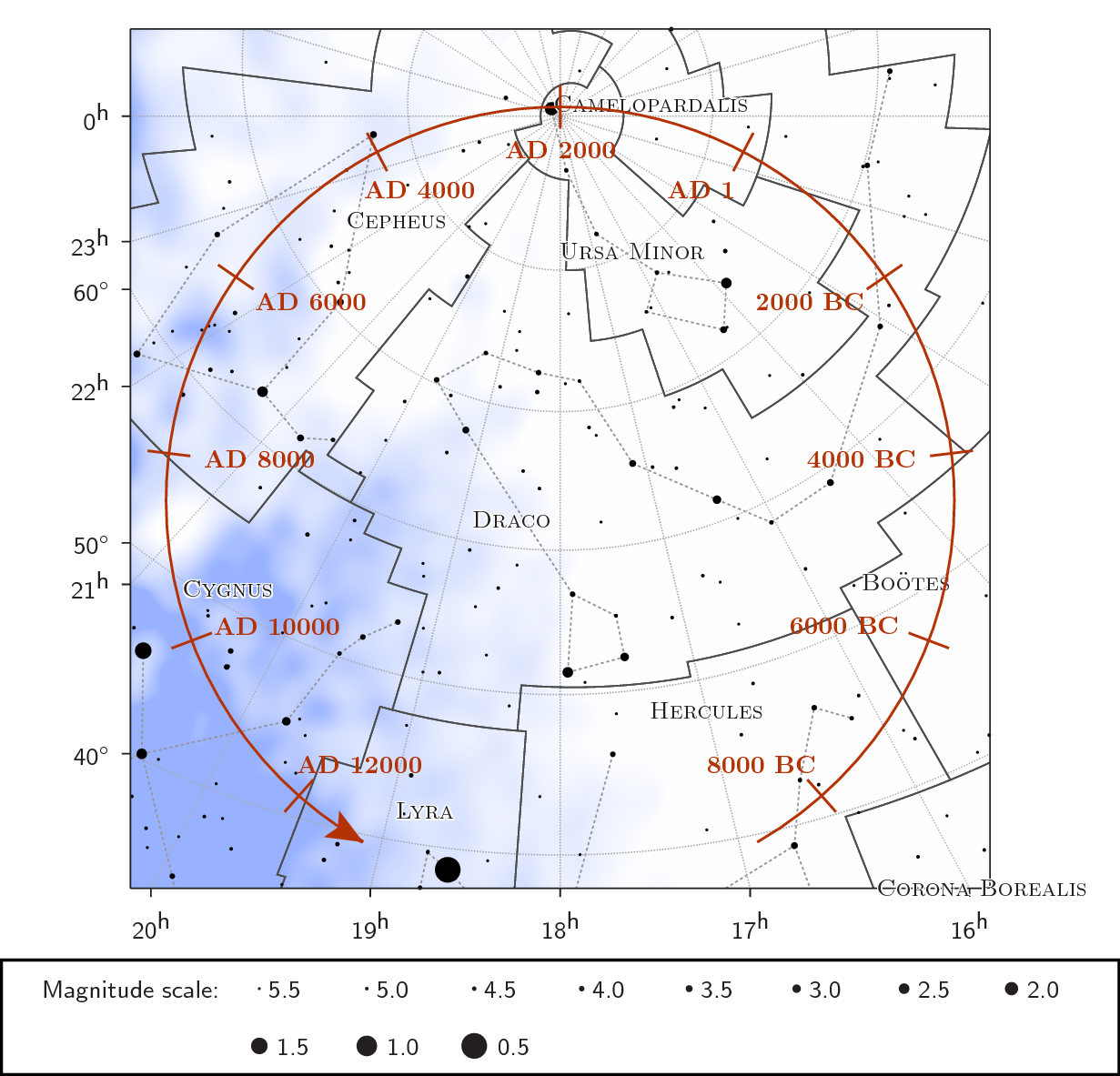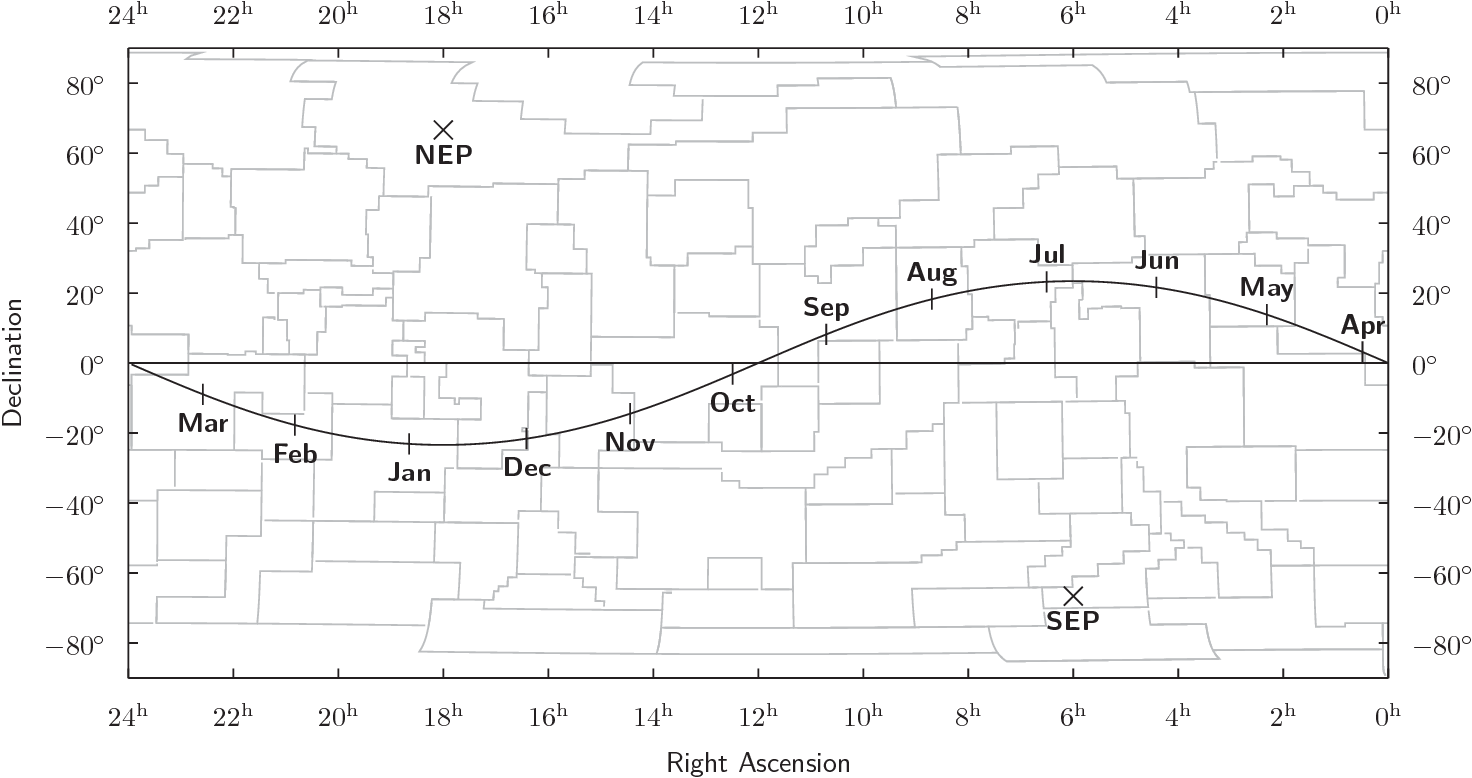A planisphere to show the precession of the equinoxes
The precession of the equinoxes is a gradual changing in the direction of the Earth's rotation axis, which causes the position of the celestial poles to drift through the constellations at a continuous rate of roughly 20 arcseconds per year. Although this effect is small on short timescales, the accumulated drift adds up to about one Moon diameter per century.
Currently the Earth's north celestial pole points close to the star Polaris, but this will not always be the case. By 2500, Polaris will be several degrees away from the true celestial pole.
A conventional planisphere is a simple hand-held device which shows a map of which stars are visible in the night sky at any particular time. By adapting the design of the planisphere, it is possible to build a similar instrument which, instead of demonstrating the rotation of the night sky around the celestial poles, instead demonstrates the movement of the celestial poles due to the precession of the equinoxes.
Download your planisphere
On these web pages, you can download two models of planisphere for demonstrating the precession of the equinoxes.
One shows the effect of the precession of the equinoxes on the northern sky. Specifically, it shows the precession of the north celestial pole through the northern sky. The other shows the effect of the precession of the equinoxes on the southern sky.
Assembling your kit
Assembly instructions
Step 1 – Download a planisphere kit using the form above. You can either download the individual components separately, or as a single PDF file. In order to fit together, the pieces must be printed at the same scale, which is easiest achieved with the single PDF file.
Step 2 – Print the star wheel and the body of the planisphere onto two separate sheets of paper, or more preferably onto thin card.
If you have any transparent plastic to hand, e.g. acetate sheets for use on overhead projectors, you should print the right ascension / declination grid onto a sheet of plastic. If you do not have any acetate to hand, don't worry – your planisphere will work fine without it!
Step 3 – Carefully cut out the star wheel and the body of the planisphere. Also cut out the shaded grey area of the planisphere's body, and if you have it, the grid of lines which you have printed onto transparent plastic. If you are using cardboard, you may wish to carefully score the body of the planisphere along the dotted line to make it easier to fold it along this line later.
Step 4 – The star wheel has a small circle at its center, and the planisphere's body has a matching small circle at the bottom. Make a small hole (about 2mm across) in each. If you have a paper drill to hand, these are ideal, but otherwise you can use a compass point and enlarge the hole until it is around 2mm across by turning the point in a circular motion.
Step 5 – Slot a split-pin fastener through the middle of the star wheel, with the head of the fastener against the printed side of the star wheel. Then slot the body of the planisphere onto the same fastener, with the printed side facing the back of the fastener. Fold the fastener down to secure the two sheets of cardboard together.
Step 6 (Optional) – If you printed the right ascension / declination grid onto a sheet of plastic, you should now stick this grid of lines over the viewing window which you cut out from the body of the planisphere.
Step 7 – Fold the body of the planisphere along the dotted line, so that the front of the star wheel shows through the window which you cut in the body.
Congratulations, your planisphere is now ready for use for demonstrating the precession of the equinoxes!
How to use your planisphere
On this special design of planisphere, the sky is projected onto the star wheel with the north ecliptic pole at the center. The grey lines marked onto the transparent plastic window mark the right ascension and declination of the stars behind.
As the star wheel is rotated, the position of the north celestial pole turns in circles around the ecliptic pole, simulating how the celestial coordinates of stars change over time due to the precession of the equinoxes.
Turn the star wheel until the arrow on its edge lines up with the scale of years marked around the top of the planisphere. The viewing window will now show all of the stars in the celestial northern or southern hemisphere in this year.
You can read off the changing celestial coordinates of stars over time using the grid of lines of constant right ascension and declination marked onto the transparent plastic window.
License

Like everything else on this website, these planisphere kits are © Dominic Ford. However, they are provided for the benefit of amateur astronomers worldwide, and you are welcome to modify and/or redistribute any of the material on this website, under the following conditions: (1) Any item that has an associated copyright text must include that unmodified text in your redistributed version, (2) You must credit me, Dominic Ford, as the original author and copyright holder, (3) You may not derive any profit from your reproduction of material on this website, unless you are a registered charity whose express aim is the advancement of astronomical science, or you have the written permission of the author.





